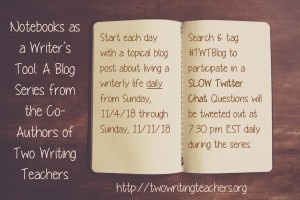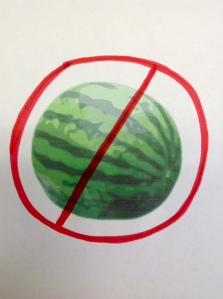
That sunny, summer day, I pulled the driver’s door closed of my grandmother’s 1978 Volkswagen Rabbit. My grandmother sidled in through the passenger door and took her seat beside me. Quickly she closed the door and folded her hands silently in her lap. Looking down nervously, I noticed the pedals. “Why are there three pedals?” I asked. I knew one was the gas pedal– that long one there– and I assumed one of the others to be the brake. But what about that third one? “It’s the clutch,” my grandmother explained. “When you shift into different gears, you have to push it down. That allows you to put the car into first gear, second gear, and so on.” At age fourteen, I felt a little bewildered. “Why?” I said aloud. My grandmother’s face lightened into an understanding smile. “Well, otherwise we’re not going anywhere. Here, let’s start the car and I’ll show you how the clutch works.”
Understanding the purpose of something can unlock a path forward. This was certainly the case with the clutch pedal in my grandmother’s Volkswagen. And although it required a great deal of practice to actually operate the clutch with ease and prowess, I soon became a pretty competent driver. This week, the authors of Two Writing Teachers are devoting digital ink to supporting teachers in thinking about the writer’s notebooks as an important writer’s tool. Today, let’s think about the various purposes of a notebook. Like understanding what role the clutch plays when driving a car with a manual transmission, understanding a few vital purposes of a writer’s notebook can support students in propelling their writing lives forward in meaningful, growth-oriented ways. And just like my grandmother went on to explain both the importance and the purpose of the clutch in an automobile, it is important that we share the importance, role, and purpose of writer’s notebooks with our students.
Purpose One: A Place to Write About Small Things. One of the most basic goals we probably hold for our writers is to write with meaning and focus. It is so important students know that one thing writers do, at a most basic level, is strive to craft ideas in service of a message, a point; in other words, meaning. Writers work tirelessly to answer the question, “What do I want my readers to know or to think after they have read my writing?” Oftentimes writers will use notebooks to hang on to fleeting ideas, jot some notes, capture a bit of thinking, etc. Thus, it can be helpful if we teach our young writers that one purpose of their notebooks can be to “write about small things,” which can be loosely translated to “work to write about focused ideas.”
One way some teachers have introduced this concept of focusing on small things is through the metaphor of a watermelon. While teaching in seventh-grade classrooms, I used to hang a sign that looked something like the one here:

This metaphor can help students understand the difference between a piece of writing that is full of seeds — too many! — and a piece of writing that grows from one, seemingly small “seed idea.” In narrative notebook entries, for example, we often focus on writing small moments in our lives. Rather than attempting to write about “My Summers at Grandma’s,” we might write about “The Time I Rode the Riding Lawn Mower at Grandma’s” or “The Time We Went Fishing at Grandma’s.” Kids often struggle with the concept of focusing writing around a tightly selected topic. In informational writing, for example, students often want to write everything there is to know (well, that they know) about the game of soccer (“Each team has eleven players on the field,” “there are two goals,” etc.). But from the outset of our workshops, if students understand the concept that one of the purposes of a writer’s notebook is to write about small things, this can help them to begin focusing right away.
Purpose Two: A Place to Practice Strategies Taught in Class. Writer’s notebooks have a second important purpose of providing a place to practice what we (their teacher) have taught them as writers. In this way, a writer’s notebook is distinct from a “journal.” A quick Google search of the word journal reveals a number of definitions related to “a place to keep records.” Perhaps you or even some of your students enjoy keeping a journal or diary in which you record events that have happened, along with your thoughts or reflections about those events. This is certainly a valuable endeavor with many benefits! However, we want to teach our young writers that a writer’s notebook is not that; it is, as Betsy wrote, a writer’s tool. It is a place where students both live like writers and work to become stronger writers. As Lucy Calkins writes in The Common Core Writing Workshop (2014), “…there is a great deal of difference by what people mean by journal and what your students are doing. Journals are often containers for writing that have no audience…and that are never revised, edited, or published” (Heinemann, p. 42).
In this way, notebooks are kind of like a practice field. Growing up, my brother and I played on soccer teams. On the weekends, we loved to go out into our backyard and play soccer, oftentimes practicing moves and techniques our coaches (and friends) had taught us in team practices. Most professional sports teams practice in one place and play games in another. This metaphor can be brought to our writers! As their coaches, we want to encourage our students to work hard to improve; one way to do that is to practice, applying what they’ve learned to do in their notebooks. Aimee Buckner, author of Notebook Know-How: Strategies for the Writer’s Notebook (Stenhouse, 2005) once said,
“A Writer’s Notebook gives students a place to write everyday…to practice living like a writer. The purpose of a notebook is that it provides students the practice of simply writing. It’s a place for them to generate text, find ideas, and practice what they know about spelling and grammar. It’s the act of writing — the practice of generating text and building fluency — that leads writers to significance.”
Purpose Three: A Place to Experiment and Take Risks. A few years ago, I attended a workshop led by a Harvard Professor, Dr. David Dockterman. In his presentation entitled, “Developing Academic Mindsets for Literacy,” Dr. Dockterman enlightened everyone on a critical connection regarding the importance of risk-taking and learning. He said, “We learn when we take risks. We learn when we do something we have not done before…otherwise we are not learning.” With this important understanding in mind, we want to invite our students to take risks in their writer’s notebooks. This can mean writing entries about very personal topics, trying out new craft moves you teach them or they learn from a mentor text, trying on unfamiliar topics, or however a writer feels he or she defines taking a risk. And knowing that risk-taking can be scary, it is also important that we model such writing behaviors for our students. We can say things like, “I’ve never tried this in my writing before…” or “I’m not sure how this is going to go, but…” Modeling our willingness to experiment can send the message that writers take risks. Writers experiment. Writers try stuff out.
A Place to Set Goals and Work to Meet Them. Getting better at something requires not just practice but deliberate practice. Often people do stuff year after year and do not get better–because getting better requires resolve! And it takes a ‘working on’ mindset. Therefore, we can consider inviting students to use the notebook to set goals and work to meet them. There are a few ways this can look:
-
- Volume goals: Sometimes students might work on a goal to write more, either in a single sitting or over a longer period of time. In the past, I have worked with students by asking them to run their finger down a page to a place they think they can write to in ten minutes and place an X. Then I’ll start a timer (sometimes a fictitious one) and leave them to work independently. With other students, I have worked with them on setting a volume goal for the week.
- Structure/Development goals: In October, I wrote about student checklists (that post is here). Checklists that lay out clear learning targets can also be turned into writing goals by our student writers. After reviewing a draft, students can select a few places on the checklist where they may have marked “Not yet,” and copy or tape those boxes into their writer’s notebooks. Some teachers have even asked writers to save a special section of the notebook for goals, conference artifacts, etc.
- Writing Process goals: In her book The Writing Strategies Book, Jennifer Serravallo does a beautiful job laying out ten important categories that can help teachers and students identify writing goals, from composing with pictures, to conventions, to writing partnerships. One of her early blog posts summarizes those goals.
- Personal goals: Aside from pre-made checklist or teacher-negotiated goals, it is also worthwhile to ask students to reflect and think about what they want to work to get better at in their writing. Some have said, “I want to take more risks in my writing and try to reveal myself more,” or “I want to vary the tone of my writing,” or “I want to try to write more often.”
Eventually, over time, I became more skilled with using a clutch and shifting gears in Grammy’s old Volkswagen. It took time, practice, and patience. But with a clear goal in mind and lots of supportive coaching from my grandmother, I soon not only understood the purpose of a clutch, but was actually moving down the road. As teachers, if we are able to help our writers understand the purposes of their writer’s notebooks, chances are we can help set them up to be moving down the road of becoming stronger writers.
GIVEAWAY INFORMATION:
- This giveaway is for a free 20-minute classroom Skype session with author Amy Ludwig VanDerwater whose popular blog Sharing Our Notebooks is an excellent resource for notebookers of all ages and interests.

- For a chance to win this Skype session with Amy, please leave a comment about this or any blog post in this blog series by Sunday, November 11th at 6:00 p.m. EST. Betsy Hubbard will use a random number generator to pick the winner’s commenter number. His/her name will be announced in the ICYMI blog post for this series on Monday, November 12th.
- Please leave a valid e-mail address when you post your comment so Betsy can link you up with Amy if you win.
- If you are the winner of the Skype session, Betsy will email you with the subject line of TWO WRITING TEACHERS – AMY LV. Please respond to her e-mail with your mailing address within five days of receipt. A new winner will be chosen if a response isn’t received within five days of the giveaway announcement.


Thanks for proposing four distinct purposes for note booking. This is especially helpful for new teachers who, without enough classroom experience, often struggle with purpose.
LikeLike
Notebooks feed a writer. They are the writers playground and place for discovery. (I do call mine a Writer’s Journal, though ;))
LikeLike
WRITING RADAR by Jack Gantos is one of the best books I’ve ever read! It gives kids a funny and relatable understanding of HOW to become the best writer you can be! I read about 5 minutes before every Writers Workshop to inspire my second graders.
LikeLike
How timely! Meeting with Middle School Teachers today… Reminders of “purpose” & “goals” are so helpful! Thank you!
LikeLike
I am starting writing journals for narrative writing in my 7th grade class today. My colleagues are Lucy Caulkins devotees…I like to create my own lessons…but they are generally the same ideas. I like timed writing, the watermelon poster, and just setting up the idea generator of this being a place to try.
LikeLike